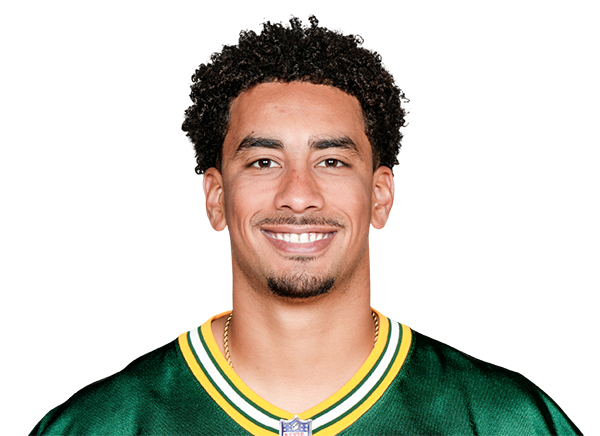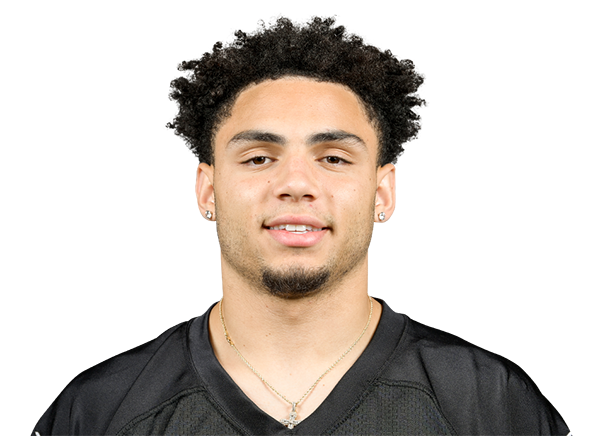Keeping Dynasty Weird: The Dirty Dozen Auction Leagues
One of my recent passions when it comes to dynasty football is educating myself about varying unique league concepts. Some might even call these leagues weird. If that’s true, I want to keep dynasty weird. In this series, I will profile some leagues based on a unique concept. Some of these league I’ve created and some I have been a part of, but all have something special about them.
It happens every off-season to me and many other dynasty football players. With real game action put on hold, I scratch the fantasy itch by joining new leagues. Early in my fantasy football career, I would embark on my journey each January to find the perfect dynasty league. Most often, this would result in a short-term stay in a league I could tell was going nowhere fast. Finally, I came to the realization that if I wanted to find the right league for me, the best option was to create that league myself. That is how I became a commissioner.
A few years ago (and a few years after successfully transitioning from just a dynasty player to a dynasty player/commissioner), I began to really focus on auction leagues. At this time, I had never been in an auction league, but the more I read about them, the more I wanted to try them out for myself. This was a little intimidating due to my lack of experience in the format, but what was the worst that could happen, right!?! So, I read and read and read some more about auction league strategy and common league setups. As I went through this learning process, one thing seemed very odd to me. Why would a dynasty league jump-started in such an exciting method as an auction abandon the format as soon as the dust cleared on the startup? It seemed every established dynasty auction league I could find used an annual rookie draft, instead of an auction. I questioned some fellow dynasty players about this and there response was even more confusing. I was told there was not an easy way to allocate funds to each team for a rookie auction. Would all teams get the same amount of money for the auction? That hardly seemed fair. There had to be an easier way to manage this.
It was at this point I decided the league I was looking for (an auction league with an annual rookie auction), was not out there. At least I couldn’t find it. I chose to do what I had already done in the past – create the league myself. I came up with a very basic set of rules (the most important of those being that each off-season would highlighted by a rookie auction) and went in search of eleven other owners willing to give this unique format a chance. That was not a difficult task as there were plenty of others who seemed just as intrigued as I about an auction league of this type. I found this was the perfect chance for me to test out some other league rules and settings I had been interested in, but I knew would never be voted in as a feature in my “main” leagues. In addition to the annual rookie auction, this league would also use double headers, a two-man taxi squad and the option for other owners to poach players from other taxi squads.
The Dirty Dozen Dynasty Auction League had been born.
The league was now full with twelve interested owners and the basic outline of the rules had been agreed upon. We would begin the league with a startup auction. Each owners had a $400 budget in which to fill their team with anywhere between eighteen and 28 players. Two of those players (either rookies or second-year players) could be moved to the taxi squad. Each week, every owner would face off with two opponents as part of our double-header schedule. Owners had the ability to swipe away the young players who found themselves on a taxi squad, but only at a high price. The toilet bowl winner would also earn some additional funds to be used in the rookie auction. The only rule left to be settled was the one the league was founded upon – how would we set up the rookie auction? Fortunately, my leaguemates had plenty of suggestions.
I knew the system I wanted to implement would reward the non-playoff teams with more rookie auction money than playoff teams, but I had trouble deciding on the individual values that would represent each rookie pick. After much discussion and some much needed input from the other owners in the league, we chose the value chart that worked for us. It was as follows:
|
Pick |
Value |
Pick |
Value |
Pick |
Value |
|
1.01 |
$320 |
2.01 |
$100 |
3.01 |
$44 |
|
1.02 |
$295 |
2.02 |
$95 |
3.02 |
$41 |
|
1.03 |
$270 |
2.03 |
$90 |
3.03 |
$38 |
|
1.04 |
$245 |
2.04 |
$85 |
3.04 |
$36 |
|
1.05 |
$225 |
2.05 |
$80 |
3.05 |
$34 |
|
1.06 |
$205 |
2.06 |
$75 |
3.06 |
$32 |
|
1.07 |
$185 |
2.07 |
$70 |
3.07 |
$30 |
|
1.08 |
$165 |
2.08 |
$65 |
3.08 |
$28 |
|
1.09 |
$150 |
2.09 |
$60 |
3.09 |
$26 |
|
1.10 |
$135 |
2.10 |
$55 |
3.10 |
$24 |
|
1.11 |
$120 |
2.11 |
$50 |
3.11 |
$22 |
|
1.12 |
$110 |
2.12 |
$47 |
3.12 |
$20 |
|
1.13 |
$80 |
- Note: The 1.13 pick is awarded to the toilet bowl winner.
Here are a few other details about the rule and how it works for our league.
- To begin the rookie auction each spring, four players are nominated per day. The nomination order is in reverse order of the prior season’s finish. The teams with the four worst records will nominate on day one, assuming they have some rookie money.
- We continue to follow the order with owners dropping out as they run out of funds.
- Prior to the end of the regular season, owners are allowed to trade future draft picks. Much like a standard league where owners are unsure where the future pick will be in a round, owners are unsure of the exact monetary value of the pick being traded.
- Once the season has concluded and all draft picks are assigned, owners have the flexibility to trade specific amounts of money. For example, a trade could consist of $10 being dealt for a player or a future pick, even though there is not a pick in the chart that correlates to the $10 amount.
- Picks can be stacked, meaning if one owner possesses the 1.01, 2.01 and 3.01 picks, that gives him a total of $464 to spend in any way he chooses. That might mean spending all on one player, or spreading it out and adding depth in the form of multiple rookies.
If you’ve ever participated in a fantasy auction, you are well aware of the differences between that and a typical draft. Auction value is often determined by the timing of the nomination in relation to the remaining funds available. Also, all it takes is two owners chasing a player to really drive up the cost inordinately more than might be expected. With that in mind, here are the first round picks from the past three seasons.
2011 Rookie Auction
|
Pick |
Player |
Auction Value |
|
1.01 |
Mark Ingram |
$380 |
|
1.02 |
AJ Green |
$301 |
|
1.03 |
Julio Jones |
$259 |
|
1.04 |
Mikel Leshoure |
$241 |
|
1.05 |
Ryan Williams |
$232 |
|
1.06 |
Daniel Thomas |
$201 |
|
1.07 |
Greg Little |
$154 |
|
1.08 |
Randall Cobb |
$146 |
|
1.09 |
Jacquizz Rodgers |
$135 |
|
1.10 |
Kendall Hunter |
$130 |
|
1.11 |
Shane Vereen |
$125 |
|
1.12 |
Roy Helu |
$110 |
2012 Rookie Auction
|
Pick |
Player |
Auction Value |
|
1.01 |
Trent Richardson |
$605 |
|
1.02 |
Andrew Luck |
$403 |
|
1.03 |
Doug Martin |
$401 |
|
1.04 |
Robert Griffin III |
$330 |
|
1.05 |
Justin Blackmon |
$235 |
|
1.06 |
Michael Floyd |
$181 |
|
1.07 |
Kendall Wright |
$141 |
|
1.08 |
David Wilson |
$140 |
|
1.09 |
Isaiah Pead |
$135 |
|
1.10 |
Lamar Miller |
$111 |
|
1.11 |
Ronnie Hillman |
$101 |
|
1.12 |
Alshon Jeffery |
$80 |
2013 Rookie Auction
|
Pick |
Player |
Auction Value |
|
1.01 |
DeAndre Hopkins |
$226 |
|
1.02 |
Le’Veon Bell |
$214 |
|
1.03 |
Eddie Lacy |
$214 |
|
1.04 |
Tavon Austin |
$180 |
|
1.05 |
Monte Ball |
$178 |
|
1.06 |
Cordarrelle Patterson |
$171 |
|
1.07 |
Giovani Bernard |
$170 |
|
1.08 |
Zac Stacy |
$135 |
|
1.09 |
Travis Kelce |
$108 |
|
1.10 |
Markus Wheaton |
$107 |
|
1.11 |
Johnathan Franklin |
$105 |
|
1.12 |
Tyler Eiffert |
$101 |
After looking over these past auctions, it’s easy to notice the difference between the three classes. The rookie class of 2012 was clearly much highly regarded entering the league as evidenced by the high prices of players like Trent Richardson, Andrew Luck and Doug Martin. This difference in value would not be noticeable in a league with a rookie draft rather than an auction.
Going into our fourth year, this league has been exactly what I was looking for in the winter of 2010 and I would recommend this league set up to anyone looking for an auction league, or even for current leagues that began with a startup auction.
If you have any questions about the rookie auction or any other aspects of this league, please post them below or contact me on Twitter @RyanMc23
- Monday Mocks: 2025 “What If” Rookie Mock Draft - March 31, 2025
- Monday Mocks: 2025 Off-Season Movement - March 24, 2025
- Monday Mocks: 2025 March Startup ADP (Including Rookies) - March 17, 2025

























































